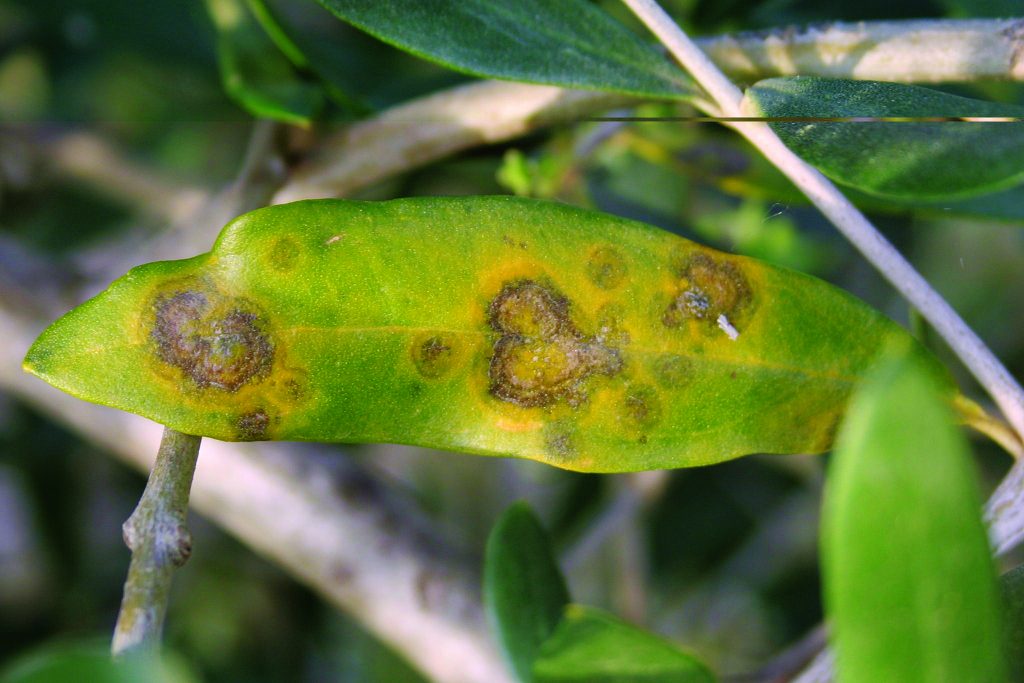
Spilocaea oleaginea is one of the most common pathologies affecting olive trees. Unfortunately it is still underestimated by too many farmers, who then find themselves having a decrease in their production and therefore in their respective earnings. To date, digital technology helps us to find out how and when to treat Spilocaea oleaginea: technology is evolving day by day and with it also the way of farming. This is why we must keep up with the times if we want to mark the market with a certain competitiveness, given not only by product quality but also by production, intervention, collection and storage times. Therefore, it is in this context that today we want to talk about how to treat Spilocaea oleaginea by early diagnosis thanks to digital.
Spilocaea Oleaginea
To know how to cure the peacock’s eye, first of all you need to know this path in depth.
Spilocaea oleaginea, as you will already know, is classified as a fungal disease that affects olive trees especially on the leaves. The causative agent, that is the person responsible for the damage, is a scientifically named Spilocaea oleaginea fungus.
This remains active for the entire period of the year, on some occasions taking on a state of quiescence during the hottest and dryest period of the summer or in full winter.
Infections occur mainly during the spring and autumn periods.
Causes
Among the main causes that encourage the appearance of Spilocaea oleaginea include all those adverse weather conditions for the olive tree:
- Humidity
- Low temperatures
- FrostIntense rains
Symptoms
The affected leaves, therefore, undergo death and fall.
Meanwhile, however, the peacock eye necrotizes ever greater parts of the leaf, reducing for a long time the specific surface on which it receives sunlight to perform chlorophyll photosynthesis.
As if that were not enough, the agricultural sector is strongly conditioned by external agents, especially meteorological ones. Think of unpredictable factors, such as environmental risks, rain, hail, wind, biological hazards, chemical pollution. Consider also the so-called insurmountable factors, such as the limited nature of the land, precisely the seasonality, the perishability of the products.
Therefore, the plant is under continuous stress and plant activity is limited.
Damage
The affected leaves, therefore, undergo death and fall. Meanwhile, however, the peacock eye necrotizes ever greater parts of the leaf, reducing for a long time the specific surface on which it receives sunlight to perform chlorophyll photosynthesis.
The process penalizes the whole plant, decreasing production. This will be reduced the more the damage will be. Therefore, the plant is under continuous stress and plant activity is limited.
Early diagnosis thanks to digital

Knowing how to take care of Spilocaea oleaginea with new technologies and with digital technology certainly brings very high benefits to all farmers who adopt these instruments.
Early control, in fact, allows the evaluation and analysis of atmospheric conditions favorable to the appearance of the pathology, be it peacock’s eye or others, so as to intervene promptly with preventive operations.
Avant-garde technologies such as Elaisian, corporate weather stations, data analysis software and specific algorithms specific for olive-growing, allow us to gain an important advantage over the nature of the events, as well as a certain competitiveness towards those who are still lacking.
